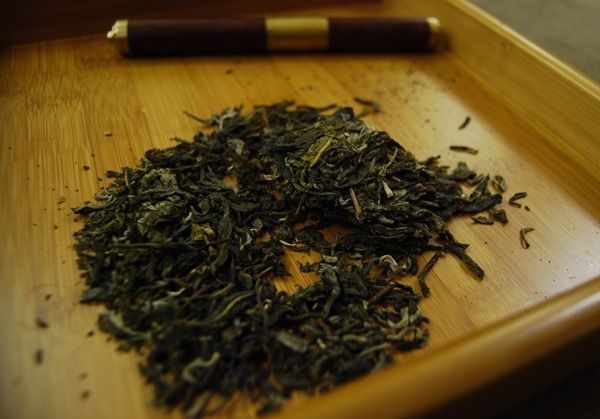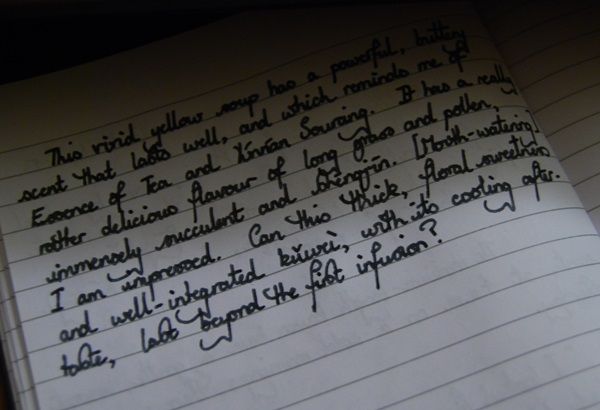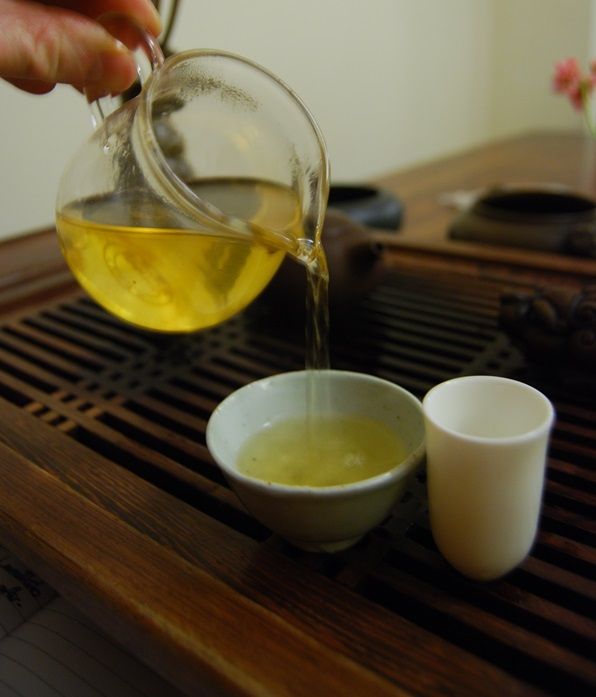The day after an interview, I often find that I cannot sleep. This morning was no different: it is time for another 4.30 a.m. pu'ercha session, which you can probably determine from the quality of the light in the photographs below...
This is a fascinating cake, and already "checks all the right boxes": it was made by a small outfit, it comes from a remote region the teas of which I haven't encountered before, and that area is itself interesting. In this case, the area is Matai, which (i) sounds like a cocktail, and (ii) is somewhere between Mengku and Bangdong*. This makes it a Lincang cake, which is always welcome at my tea-table.
*chortle
The brand is "Mapu", where the first character refers to Matai, and the last to the name of the farm owner: Pujinjing. William of Bannacha notes that her name is Bulang minority, and hence may not be decomposed into SURNAME + GIVEN_NAME.
Even at 4.30 a.m., before the March sun has risen, this cake emits a very decent aroma. I find that the cold weather (we had snow yesterday) prevents aroma escaping the leaves, but this cake is a notable exception that proves the rule.
The compression is E-Z (which I stubbornly pronounce "ee-zed"), and, as you can tell above, the leaves are reasonably small. This "Guyun" [Ancient Harmony/Rhyme/Charm] cake is the more brutal of a pair - naturally, it is my first choice.
The vivid yellow soup, pictured below, has a powerful, buttery scent that lasts well and which reminds me of young cakes from Essence of Tea and Yunnan Sourcing. It has a really rather delicious flavour of long grass and pollen, immensely succulent and provoking shengjin [mouth-watering sensations].
Happily, the thickness of the body and the sheer quantity of contents in the initial infusions turns out to last very well. I continue to drink the tea throughout the day in laboratory, albeit the drinker in a rather tired state, and it stays solid and fat throughout.
I enjoyed this perky, fullsome Lincang cake very much, and felt the urge to order a cake immediately. At just 35 Euro (45 USD), it punches way above its weight.
One has to be careful buying cakes with tons of floral character - this is often the first thing to disappear after a few years. However, the massively chunky base of this tea suggests that, even without its pollenated high-notes, it has the sheer solidity to age quite well. Its heavy kuwei [good bitterness in the throat] lasts very well, provokes all manner of excellent sensations in the mouth, and reminds me that good tea does not have to cost the Earth.
Highly recommended, if you like big Lincang cakes.






Dear Hobbes,
ReplyDeleteThis sounds wonderful. I was planning on another order from Banna. And I thank you again for writing. Is there any way that you could possibly include a list of your all-time favorites? A sort of top 10 or 20 list?
All the Best,
Charles
Dear Charles,
ReplyDeleteA list is an interesting idea, but it is difficult to rank tea: there are so many genres and price-categories that comparison is difficult. The thoughts on this humble web-site more-or-less indicate how I go about finding tea: it is a "random walk", perhaps semi-guided at best. That said, there are some old classics, which keep cropping up over and over in my writing. These tend to be unexalted yet delicious cakes on the 5-10 year age range. :)
Toodlepip,
Hobbes
P.s. I notice that my Mapu cake just arrived from Bannacha!